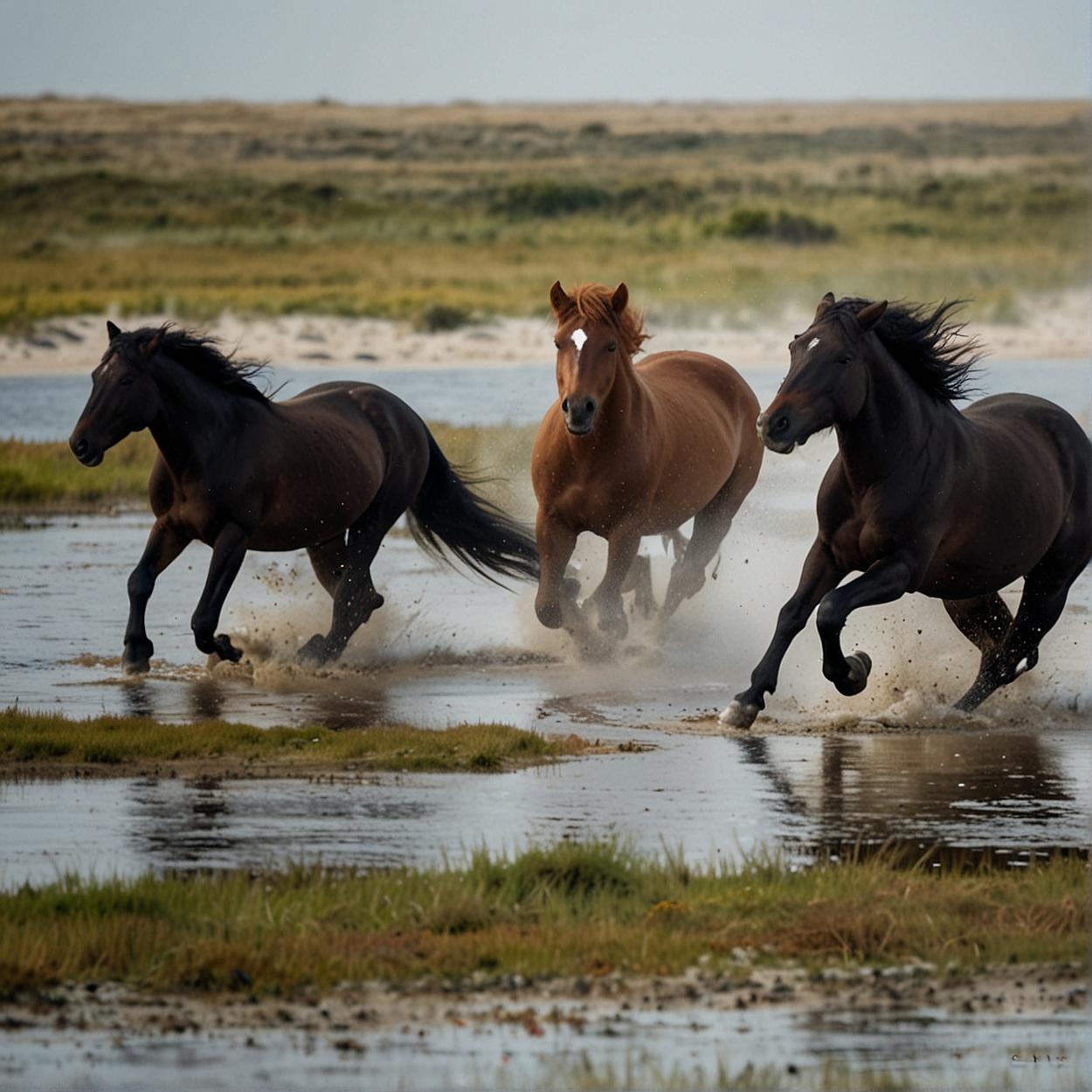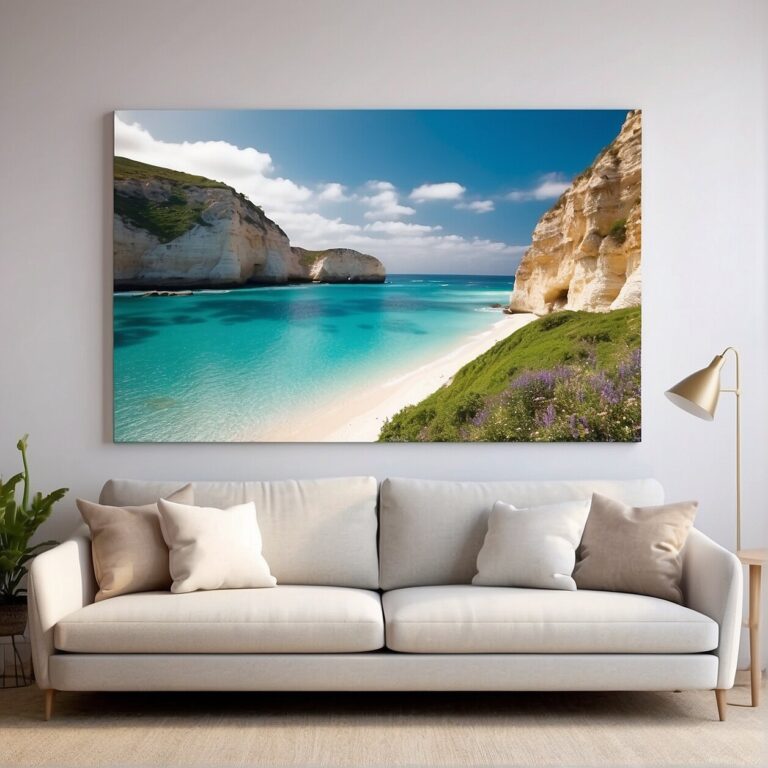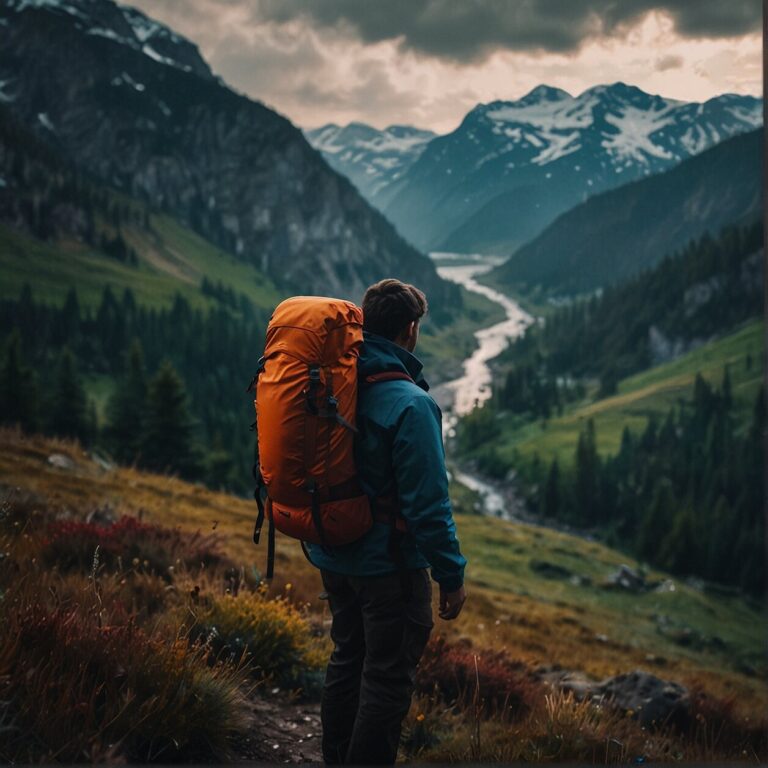Encounter with the Wild Horses of Sable Island, Canada
Imagine stepping foot on an unspoiled island, where the rhythm of the wild resonates in its core. Welcome, dear reader, to Sable Island, home to a unique assembly of untamed horses and an extraordinary blend of flora and fauna. Isolated in the Atlantic Ocean, this crescent-shaped magnet of nature’s marvel has a charm that is as beautiful as it is mysterious.
As you read on, you’ll embark on a journey that will transport you right to the heart of this untouched wilderness. Feel the breeze wafting through the long, thick manes of the wild horses; experience the vibrant buzz of the island’s ecosystem, bursting with life underneath its sandy terrain.
“Sable Island is not just an island, it’s a song of the wild sung by its horses, its sea and its sand; it’s a melody you carry within your heart long after your footprints have vanished from its shores.”
Every aspect mentioned in this article aims to paint you a picture detailing the natural splendor found on this island. Whether you’re an adventure enthusiast, a nature lover, or simply someone seeking to explore the beautiful and unseen, Sable Island beckons with the wild and the extraordinary. Join us as we take a deep dive into the enchanting world of Sable Island’s unbridled beauty.
The Majestic Beauty of Sable Island’s Wild Horses
Embarking upon the raw crests and troughs of Sable Island, the sight that overwhelms your senses is the undeniable charm of the wild horses. They saunter free, unbridled and majestic, with a grandeur that redefines beauty. Their sleek bodies glisten under the sun, highlighting the tones of dark chestnut and light fawn that define this wild breed.
These untamed equine beauties do not owe their elegance to domestic grooming. Their flowing manes, often streaked with the island’s salty winds, bear testament to their wild rendezvous with the elements. Watch as a stallion leads his mares and foals across the sandy landscapes, a true portrayal of nature’s wild poetry. Indeed, the purity of these creatures, untouched by human interference, is a sight to behold.
Their lively prancing and galloping are performances that transpire every day and each tells a story without words. A newborn colt taking his first tentative steps, a band of gleeful youngsters frolicking in the grasslands, or the solemn dignity of a mare guarding her foal; each chapter enthralls with its mesmerizing glimpse into the life rhythms of these wild horses.
Look at them through the lens of respect and admiration, and the depth of their free spirits will touch yours. The wild horses are the beating heart of Sable Island’s ecosystem, each a fascinating individual and essential part of the ever-evolving ballet of natural selection. Their enduring presence makes this remote strip of sand in the North Atlantic Ocean a global treasure, unequalled and undiminished.
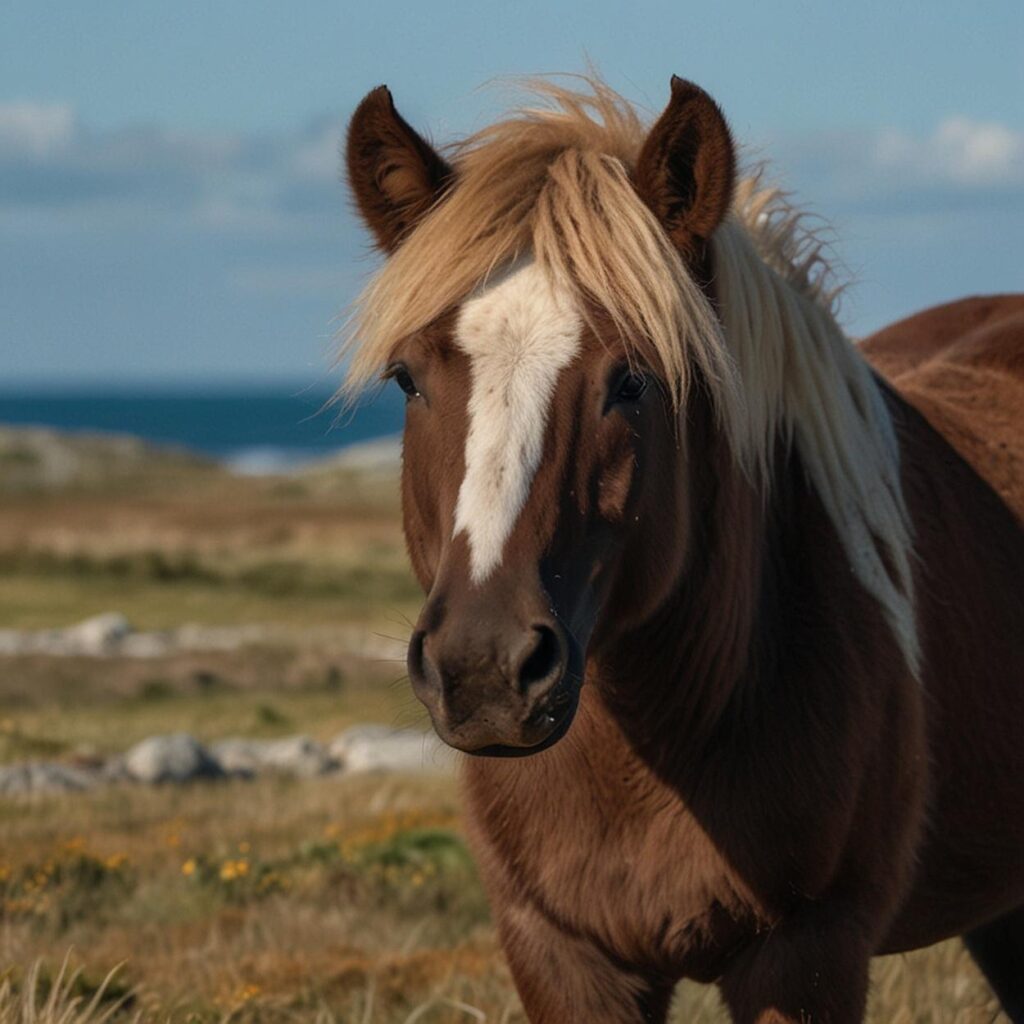
The Harmony of the Wild: How Horses and Nature Coexist on Sable Island
Imagine a moment when the wind sweeps across the dunes, rustling the marram grass, and catching the mane of a wild horse. There’s a harmony to this place, a balance that’s perhaps, hard to find elsewhere. This is the untamed world of Sable Island, where horses and nature coexist in a symphony of survival and beauty, a sight to behold for any ardent nature lover.
A stark landscape that starkly contrasts the demands of modern life, Sable Island serves as a home to around 400 wild horses, who have adapted to the harsh conditions and have become an inseparable part of the island’s ecosystem. Here, the horses are the primary grazers, feeding on the marram grass that grows abundantly and stabilizes the island’s shifting sands. It’s an awe-inspiring dance of nature, where each entity plays its part to perfection.
Unique to Sable Island, the horses have no predators, allowing them to roam freely and continue their life cycles without human interference. This is their domain—unchallenged and undisturbed—where they’ve learned to survive and thrive against the backdrop of harsh weather and limited resources.
A testament to resilience and survival, the horses of Sable Island have not just adapted to the environment but also helped shape it. Their grazing habits help control vegetation and play a critical role in determining the island’s topography. The constant interaction between the horses and the island’s fragile ecosystem is what defines the rhythm of life here – a balance between the wild and the natural that is, in every sense, truly harmonious.
But it’s not just the horses that exemplify this balance. Seals basking on sandy beaches, birds singing in the sky, and the rare plants that defy the harsh conditions, they all play their part in this island symphony. Each organism, big and small, contributes to the delicate equilibrium that allows life to persist despite the harsh realities of this isolated landscape.
The narrative of Sable Island is about so much more than just survival—it’s about a coexistence born from necessity and nurtured by time. So when you witness a herd of wild horses gallop across the barren landscapes, remember it’s just the surface of a profound saga of life, nature, and adaptability. And as you venture further, the island unveils the inspiring story of not just its horses, but its environment—an intricate web of living things surviving, evolving and painting a portrait of nature at its most raw and beautiful.
Step into the Wild: A Guide to Visiting Sable Island
Stepping onto Sable Island is like entering a fairytale realm, where the wild horses roam freely amidst the ever-changing landscape. The journey is, without doubt, an adventure, but one that requires ample preparation and a respectful awareness of the island’s inhabitants and delicate ecosystem.
Firstly, ensuring access to Sable Island demands your consideration as the island, under the protection of Parks Canada, is only accessible via charter boat or aircraft. These options provide their own unique sets of experiences but remember: schedules are dictated by the Atlantic’s temperamental weather, so a flexible travel itinerary is a must.
The island doesn’t have any public amenities like restaurants, hotels, or even a fresh water source. Hence, visitors must bring all necessary supplies, including food, water, and camping equipment if planning to stay overnight. Always remember to leave no trace of your visit, preserving the natural beauty and tranquility of this island paradise.
While on the island, adapting respectful animal-viewing practices is absolutely critical. The wild horses have flourished in this unique environment due to minimal human interference, and we must allow that balance to continue.
At times, you may also be privileged enough to witness the fascinating, if not awe-inspiring, spectacle of wild seals that lounge on the island’s shores – a testament to the diverse life forms that this ecosystem supports. Though, similar to the horses, they should be admired from a safe distance.
Finally, before you embark on this adventure, it’s highly recommended to familiarize yourself with the island’s history and ecology. Understanding the island’s unique dynamics would not only enhance your experience but also help you cherish the efforts behind preserving this unique enigma.
Journey to the Wild: How to Encounter Sable Island’s Horses Safely
With the refreshing sea air filling your lungs and the soft murmurs of waves in your ears, there’s an immediate sense of awe-inspiring wonder when stepping foot on Sable Island — a sense that is amplified by a distant sight of wild horses grazing against the backdrop of untouched dunes. However, despite the idyllic scenery and remarkable creatures, it’s vital to comport yourself responsibly for your safety as well the animals’ wellbeing.
The horses of Sable Island are, indeed, wild, which means they should be treated with respect and caution. Given their feral nature, it’s essential to remind yourself that these aren’t the equines you might find at a stable or petting zoo, waiting for a pat or a lump of sugar. Instead, these creatures are as wild as the undulating tides, with their instincts attuned to survival, not human interaction.
As such, one of the crucial pieces of advice when encountering these horses is to maintain a respectful distance. This not only protects you but also spares the horses any undue stress. The general rule is to keep at least 50 meters (165 feet) between you and the horse. In circumstances where you inadvertently venture closer, it’s recommended to back away slowly and non-threateningly. Avoid sudden movements that might startle these majestic creatures.
When visiting Sable Island, it’s also vital to not feed the horses. Their diet is comprised strictly of the native vegetation, which is crucial for their health and survival. Supplementing this with human food can lead to health complications and is against regulations for your visit.
Bearing these tips in mind, your encounter with Sable Island’s wild horses can be fascinating, embodying the raw beauty of nature, and underscoring the precious bond between man and a world that remains beautifully untamed.
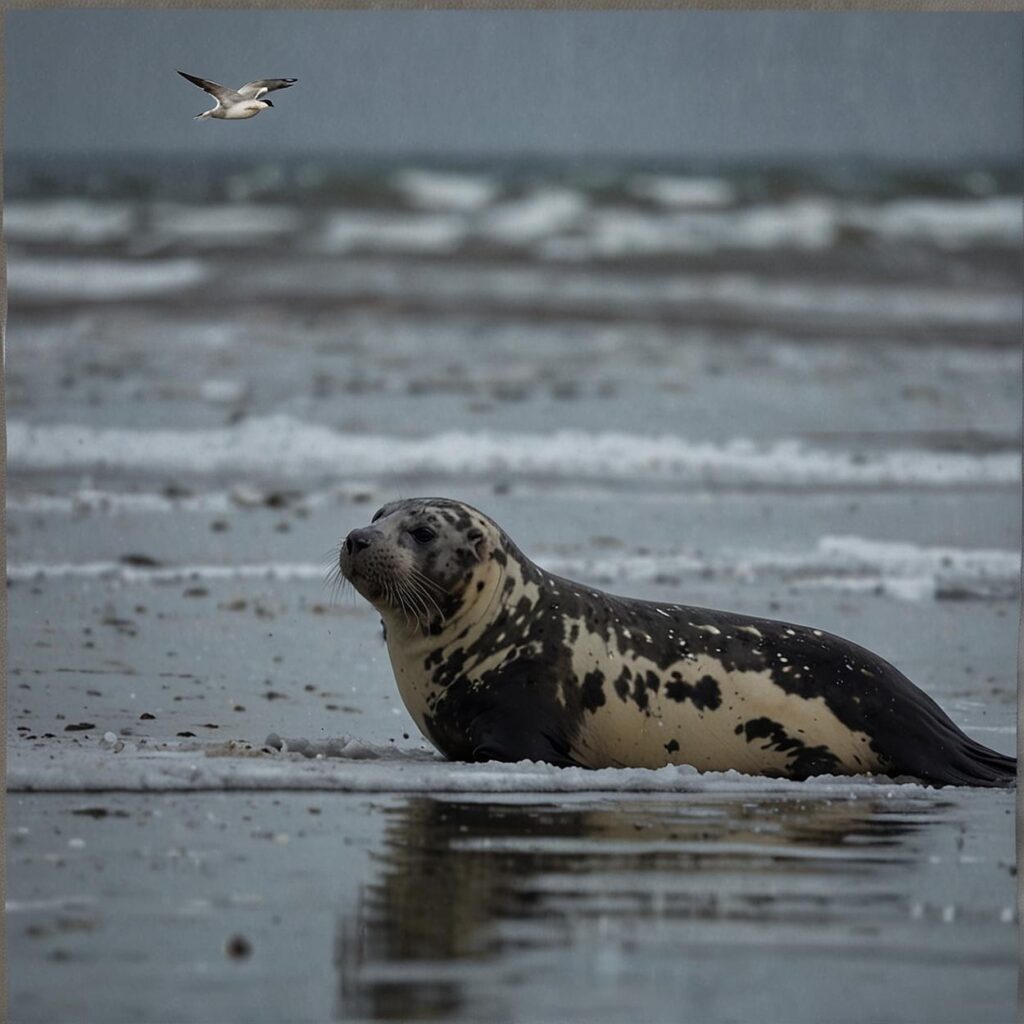
Preserving the Legacy: Conservation Efforts for Sable Island’s Ecosystem
Sable Island’s exceptional ecology is a sight to behold, but it doesn’t stay pristine without effort. However, it’s far from just the wild horses that require careful conservation on this island. The broader ecosystem they inhabit is also delicately balanced and needs safeguarding.
In response to this, environment authorities in Canada have implemented several measures to ensure the island’s continued survival. For starters, strict rules have been set for visitors. Tourism is regulated with a sharp focus on minimizing human impact.
But the conservation efforts don’t stop there. Intense monitoring programs are in place to study the island’s delicate ecosystems in detail. Through these programs, scientists aim to understand how each life form, from seals to horses, contributes to Sable Island’s biodiversity. They also hope to identify threats and take necessary actions in a timely manner to mitigate potential damage.
Increased funding has also been instrumental in the protection of Sable Island’s nature and wildlife. A portion of this budget is allocated to clean-up and restoration projects, aiming to reverse any damage that has inadvertently been done in the past.
While progress has been made in preserving Sable Island’s unique ecosystem, continuous dedication to conservation is vital. Everyone has a role to play, from government bodies and scientists to eco-tourists and nature lovers. The survival and wellbeing of Sable Island’s wild horses, and the rest of its vibrant ecosystem, is a testament to fruitful collaborative efforts of all involved.
FAQ’S
There’s no doubt that the untamed beauty of Sable Island, with its harmonious coexistence of wild horses and unique ecosystem, stirs wonder and curiosity in our minds. That’s why we’ve compiled the most frequently asked questions to add depth to your understanding and to further guide you on this extraordinary journey. Let’s unravel some of those fascinating mysteries together.
How can I visit Sable Island to see the wild horses?
Lucky for you, dear reader, Sable Island offers an incredible opportunity for visitors to witness the majesty of these wild horses in their natural habitat. Keep in mind, the island is located approximately 290 miles southeast off the coast of Halifax, Nova Scotia. Due to its remote location, there’s no regular passenger service.
But don’t worry! There are a few options you can consider. Charter boats and helicopters from Nova Scotia often make trips to the island, primarily during the temperate months from June to October. You just need to remember that such services, while amazingly adventurous, aren’t readily available everyday and must be booked in advance.
Alternatively, consider organized tours. There are several environmental tourism firms that offer group visits to the island. These tours often provide a comprehensive package, including travel to the island, accommodation, meals, and guided walks to famous horse sightings. This is a great option if you’re looking for a hassle-free journey and an enriched experience, learning from experts who completely understand the island’s ecosystem.
Remember to get permission from the Canadian Coast Guard before planning your trip. Since Sable Island is a protected National Park Reserve of Canada, gaining prior approval is a key step to safeguard both the island’s ecosystem and its visitors!
Whichever route you choose, the journey to the island will be as memorable as the untouched beauty waiting there for you. Don’t forget to bring your binoculars to soak in the panoramic views of the wild and the majestic horses that call it home.
What precautions should be taken when encountering wild horses on Sable Island?
Engaging with these wild wonders requires respect and understanding, as they are not domesticated or accustomed to human contact. Your encounter should always maintain a sense of this wild integrity. Here, we’ll guide you through some important precautions to ensure both your safety and theirs.
Firstly, maintain a safe distance. Sable Island’s horses may appear laid-back, but like any wild animal, they have a natural instinct to protect themselves when they feel threatened. Experts recommend keeping at least 50 feet between you and the horses.
Secondly, never feed the horses. Even though they might seem inquisitive, it’s essential to respect that they are wild animals that fend for themselves. Feeding them might disrupt their natural diet and eating habits, potentially causing severe health issues.
Lastly, be mindful not to interrupt their activities. Whether they’re grazing, playing, or simply resting, respect their space. Remember, you are in their habitat. By observing them quietly, you’ll experience a far more rewarding and authentic encounter, immersing yourself in their world while preserving these majestic animals’ way of life for future generations.
Are there any guided tours to see the wild horses of Sable Island?
Certainly, guided tours are an option for those who wish to embark on this breathtaking adventure. However, the very essence of Sable Island lives in its untouched wildness, and the governing bodies strive to maintain this natural state. To that effect, touring and travel arrangements are meticulously overseen by Parks Canada to ensure minimal disruption to the wildlife.
Parks Canada does offer guided tours which take groups to where the wild horses are known to frequent. These tours adhere strictly to a non-invasive policy to protect the well-being of the horses and the unique ecosystem of the island. In these journeys, the guides impart fascinating insights into the lives of these magnificent creatures, their history on the island, and the important role they play in the island’s ecosystem.
It’s crucial to remember, though, that these horses are genuinely wild and their behavior can be unpredictable. Safety and respect for both your own well-being and theirs are paramount. Most importantly, you must always remember that we are just visitors in their world. While it can be tempting to approach these magnificent animals up close, one of the best ways to respect their freedom and wild spirit is by observing them from a safe distance.
To further enrich your experience, we’d recommend timing your visit with one of the educational seminars run by Parks Canada. This is an opportunity not just to witness these wild and untamed creatures, but also to learn about their fascinating story and the many intriguing aspects of Sable Island’s unique ecology.
What makes the wild horses of Sable Island unique?
The wild horses of Sable Island are a unique breed, untouched by human intervention, and live in a harsh yet beautiful environment. These horses have adapted to survive in the difficult conditions that reign on the island.
What sets them apart is their tough, resilient nature and their ability to survive in a challenging environment. Known for their shaggy coats, which provide insulation against the harsh winter storms, their relatively small size, compact bodies, and their robust health, they exemplify the power of natural selection.
Unlike many domestic horse breeds which have been selectively bred by humans for specific traits, the horses of Sable Island have evolved entirely on their own. Their genetic diversity is low, making them not just intriguing to scientists, but also invaluable, as it allows the study of natural selection in a relatively controlled environment.
Their majestic beauty and wild spirit, combined with their ability to thrive in an environment largely untouched by humans, make them a truly unique spectacle that captures the essence of the untamed wild.
What other wildlife can be found on Sable Island?
Apart from the soul-stirring spectacle of its wild horses, Sable Island acts as a sanctuary for a rich diversity of other wildlife. As you explore this isolated wonder, you’ll quickly find out that it’s home to both land-based and marine species.
Seal species like the grey seal and the harbor seal frequently haul out on Sable’s sandy shores, particularly during the breeding season. You’ll often spot these playful creatures splashing around in the waters or sunbathing on the beach. Always keep your distance and respect their space, these are wild animals in their natural environment.
But that’s not all. The island’s sky, piped with the tremor of wings, brings fascinating bird species into view. The island’s avian population includes terns, petrels, and the critically endangered piping plover. Birdwatching enthusiasts will adore this feathered spectacle, so bring your binoculars!
In the dunes and grasslands of the island, you might also stumble upon the Sable Island Sweat Bee – a species endemic to the island and nowhere else on the planet. It’s a rare sight that showcases the island’s exceptional ecological value.
While the horses might be the star attractions, Sable Island is clearly a cornucopia of wildlife. It’s a testament to nature’s resilience and adaptability in the face of harsh, isolated conditions. Embrace the opportunity to revel in this untamed wilderness, preserving every memory with photographs and leaving the island as untouched as you found it.

